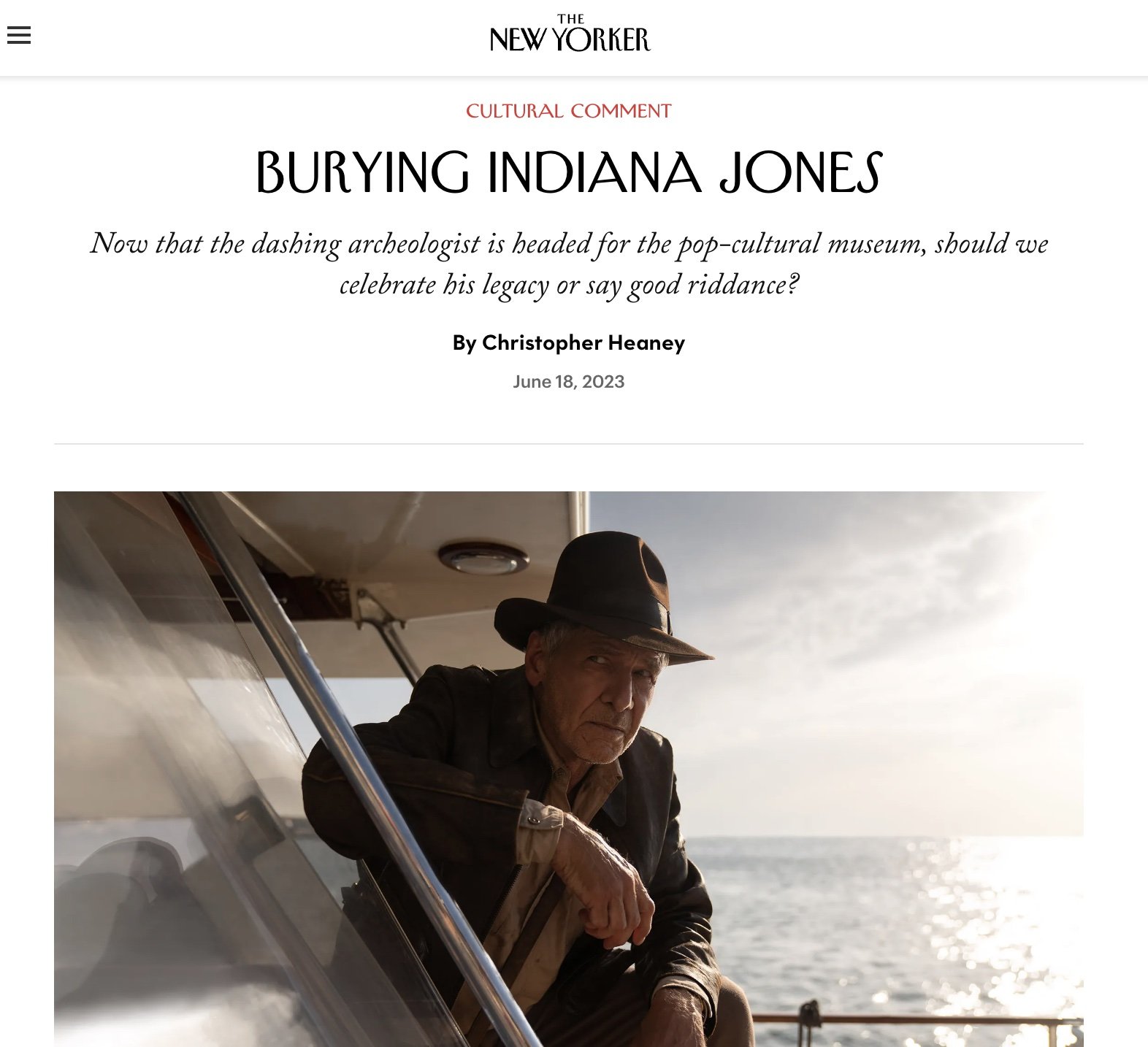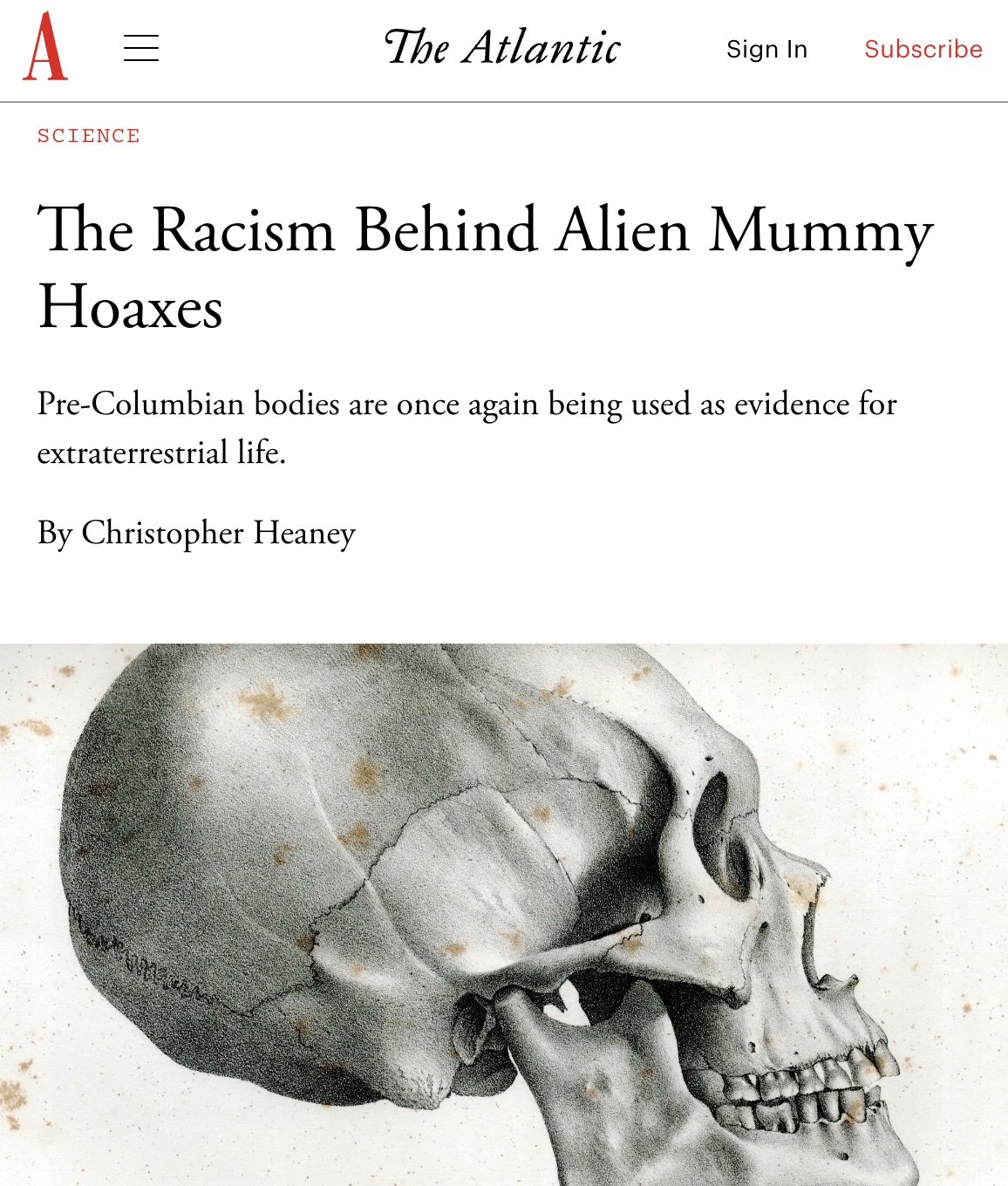"Burying Indiana Jones," The New Yorker, 18 June 2023
It’s been forty-two years since moviegoers met Dr. Henry (Indiana) Jones—a rugged archeologist who relishes fighting over the past a little more than he seems to care for it. “That belongs in a museum,” he growls at a panama-hat-wearing villain who is clutching a precious relic, in “Indiana Jones and the Last Crusade.” “So do you,” Panama Hat replies, before going down with that argument’s ship, a rain-soaked steamer off the Portuguese coast, in 1938.
We’ll soon see if Panama Hat was finally right. “Indiana Jones and the Dial of Destiny” opens on June 30th, and the actor Harrison Ford has said that this will be his last ride as Indy. Put aside the question of whether the new film will be good, or—as the New Yorker film critic Pauline Kael clocked in the character’s first outing, “Raiders of the Lost Ark,” from 1981—whether an Indiana Jones movie markets nostalgia more than it delivers wholly coherent characters. For many, this Indy movie will feel like losing a complicated uncle, whose charm is most amusingly measured by searching the Internet for “the Indiana Jones of.” (My favorites: “The Indiana Jones of Anesthesiology” and “The Indiana Jones of Spanish Baroque Music.”)
“Skull Walls: The Peruvian Dead and the Remains of Entanglement,” American Historical Review, vol. 127, no. 3 (September, 2022), pp. 1071-1101.
From 1820 through 1920, American anthropologists acquired more human remains of Andean origin than those of any other individual population worldwide. Samuel George Morton, the Smithsonian, Harvard’s Peabody Museum of Archaeology and Ethnology, and the American Museum of Natural History all made “ancient Peruvians” core to their collections, racializing the Americas’ past and present by using “ancient Peruvians” as a historic set against which living Native Americans might be compared. This process fueled the collection of Indigenous remains in general and confirms Americanist historians’ need to attend to entanglement: US scholars were adapting a Peruvian tradition of knowledge and grave robbing in which the Andes possessed the Americas’ oldest, wealthiest, most “civilized,” and most plentiful human remains. It also reminds us that recent and useful conceptualizations of early American history as vast had disturbing early republican counterparts—in this case, a violent science that entangled precolonial, colonial, and republican North and South American temporalities and embodied them in the “historic” Indigenous dead. Reckoning with history’s role in colonization includes recognizing the literal, even spirited, remains of entanglement as historical forces in their own right, with temporalities beyond those of the United States.
https://academic.oup.com/ahr/article/127/3/1071/6850927
"The Racism Behind Alien Mummy Hoaxes,” TheAtlantic.com, 1 August 2017.
Peruvian archaeologists are tired of debunking claims of extraterrestrial influence on human history. In 1968, Swiss author Erich von Däniken’s Chariots of the Gods? introduced the mainstream to the theory that the Nazca Lines, the massive geoglyphs in Southern Peru whose shapes are fully visible only from the air, were landing strips for “ancient astronauts.” Archaeologists calmly disagree, positing that they were astronomical designs that turned the desert itself into an observatory, or counter constellations matching the dark spaces in the Milky Way, or, more abstractly, cosmological figures meant to be seen by skyward deities, of which ancient Peru had many. 2008’s Indiana Jones and the Kingdom of the Crystal Skull put a new spin on this old tale, including, for good measure, the large-skulled aliens that pepper North American abduction stories. Now, Peruvian scientists are furious at a new and possibly pernicious permutation of the “ancient astronaut” theory. A web series named Unearthing Nazca purports to depict the investigation of a pre-Columbian and “humanoid” mummy. Archaeologists, who have been denied access to the mummy, worry that it is as old as the series’ creators claim, but that it is actually indigenous and Andean—a real human individual that has been mutilated to look like an alien. They worry that Unearthing Nazca is an archaeological snuff film in disguise. …
https://www.theatlantic.com/science/archive/2017/08/how-to-fake-an-alien-mummy/535251/


